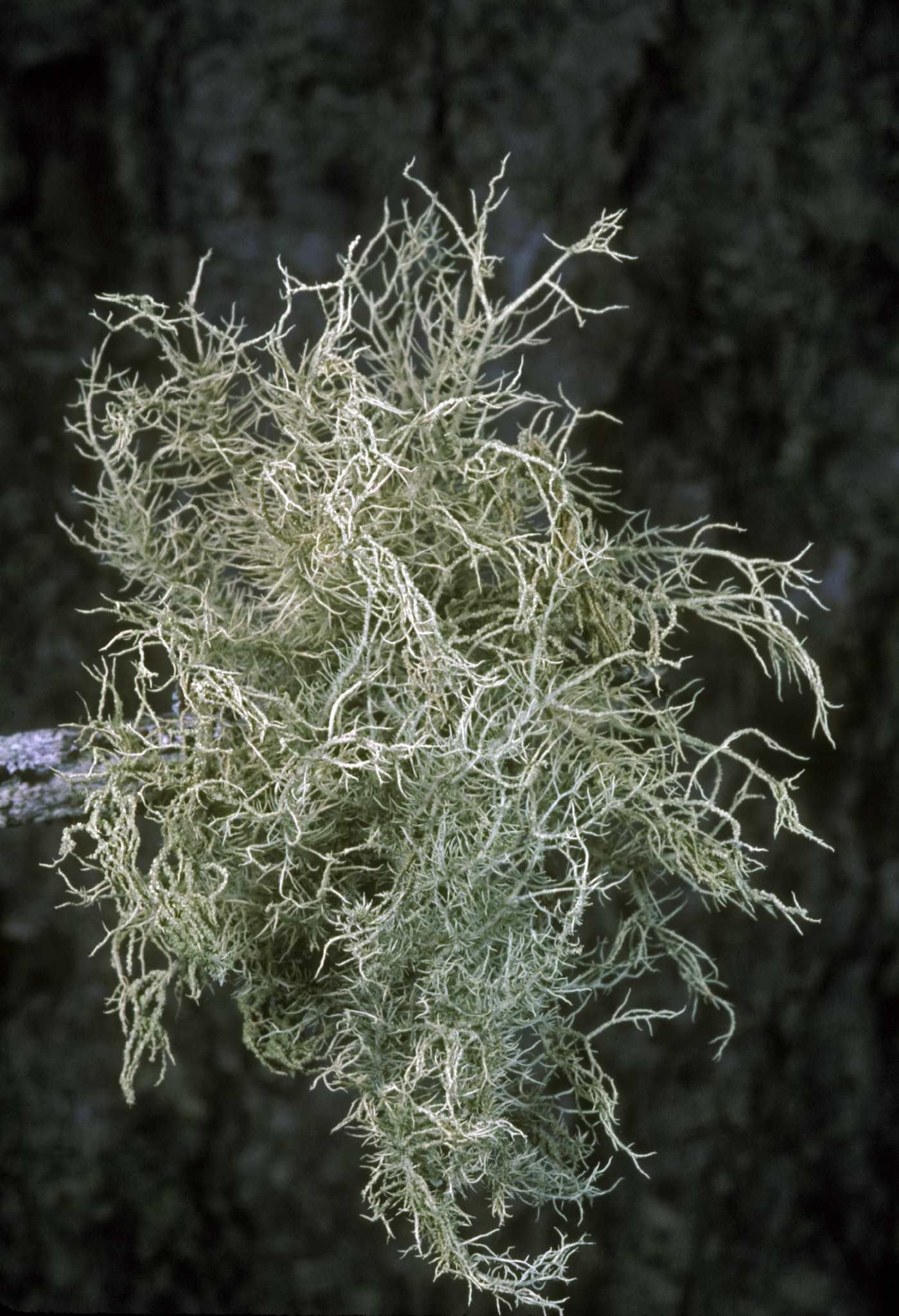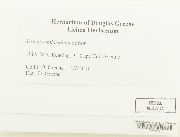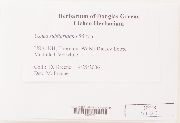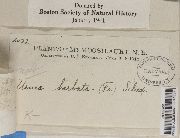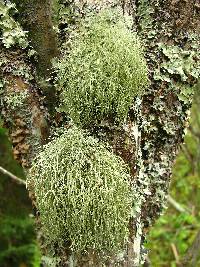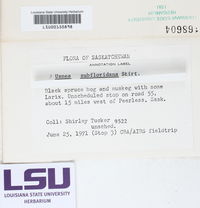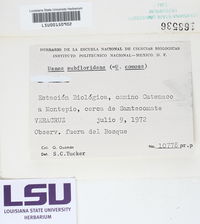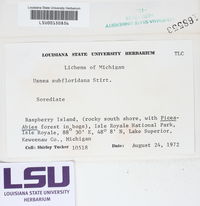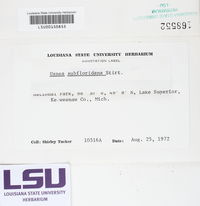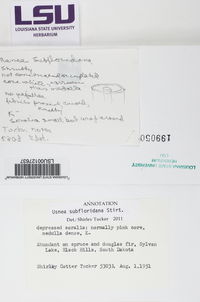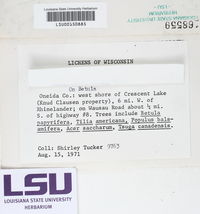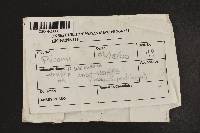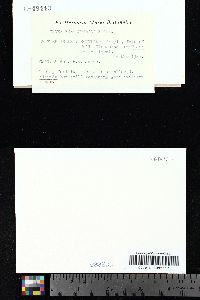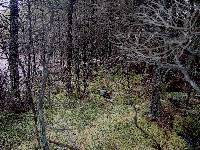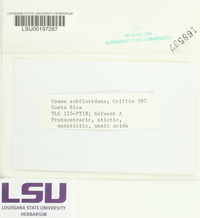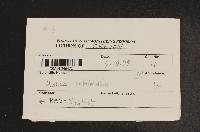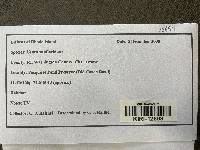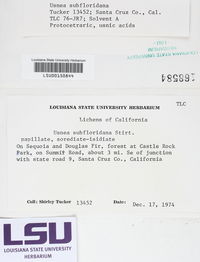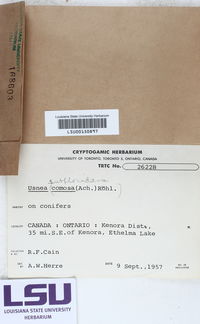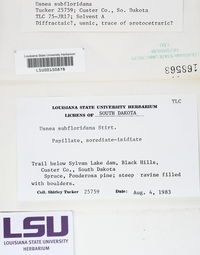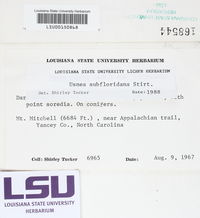
Consortium of Lichen Herbaria
- building a Global Consortium of Bryophytes and Lichens as keystones of cryptobiotic communities -
- Home
- Search
- Images
- Species Checklists
- US States: O-Z >
- US National Parks
- Central America
- South America
- US National Parks
- Southern Subpolar Region
|
|
|
|
Family: Parmeliaceae
[Lichen comosus Ach., moreUsnea barbata var. comosa (Ach.) Vain., Usnea comosa (Ach.) Röhl., Usnea comosa f. comosa (Ach.) Röhl., Usnea comosa subsp. colorans Asahina, Usnea comosa subsp. comosa (Ach.) Röhl., Usnea comosa subsp. melanopoda Asahina, Usnea comosa subsp. similis Motyka nom. inval., Usnea comosa subsp. sordidula Motyka, Usnea comosa var. comosa (Ach.) Röhl., Usnea comosa var. similis (Motyka) Erichsen, Usnea comosa var. sordidula (Motyka) Erichsen, Usnea florida var. comosa (Ach.) Vain., Usnea hirta f. hirsutula Stirt., Usnea plicata f. comosa (Ach.) Ach., Usnea plicata var. comosa (Ach.) Ach., Usnea similis Motyka ex Räsänen, Usnea subfloridana var. melanopoda (Asahina) D. Hawksw., Usnea subfloridana var. similis (Motyka) Oxner, Usnea subfloridana var. sordidula (Motyka) Oxner, Usnea subfloridana var. subfloridana Stirt.] |
Nash, T.H., Ryan, B.D., Gries, C., Bungartz, F., (eds.) 2007. Lichen Flora of the Greater Sonoran Desert Region. Vol 3. Thallus: erect-shrubby, up to 5-7 cm long, compact and densely branched branching: isotomic-dichotomous, divergent basal part: distinctly jet black with few annular cracks (very rarely concolorous with the branches) branches: tapered; lateral branches: not narrowed at attachment points segments: terete, cylindrical papillae: few to numerous, verrucous, irregular tubercles and fibercles: generally absent fibrils: slender and ±long (±3 mm when mature), few to numerous especially on main branches, ±regular soralia: punctiform, irregular, smaller than half of the diameter of the branch, arising initially on the cortex, slightly stipitate, ±erumpent, sometimes fusing together and looking like a large soralia, generally numerous, covering the terminal branches isidiomorphs: short and spinulous, numerous especially on young soralia but present on mature soralia as well pseudocyphellae: absent cortex: thick (8-12%), dull to shiny medulla: usually thin, dense to compact, not pigmented axis: moderately thick, not pigmented Apothecia: not seen Spot tests: K+ intensely yellow turning slowly orange, C-, KC-, P+ orange or K-, C-, KC-, P- Secondary metabolites: either thamnolic acid (major), ±squamatic acid (minor) or squamatic acid (major) alone. Substrate and ecology: on bark (especially Quercus spp.), rarely on wood, coastal, mainly on in small oak forests or on diverse shrubs in the chaparral between 200 and 500 m or inland in the mountains on Quercus spp. and Pinus spp. between 1500 and 2800 m World distribution: Eurasia, Macaronesia, and North America Sonoran distribution: coastal, southern California (frequent in the Channel Islands) and Baja California; rare in the mountains of SE Arizona and Chihuahua. Notes: Its black pigmented basal part, its isotomic-dichotomous ramification pattern, its terete and cylindrical branch segments, its minute soralia with numerous isidiomorphs and the production of thamnolic ±squamatic acid or squamatic acid alone in the medulla are diagnostic characters for U. subfloridana. For differences from U. praetervisa, see under this species. There is a rare morphotype collected on Santa Catalina Island with nearly concave and enlarged soralia. |
|
|
|
Powered by Symbiota

